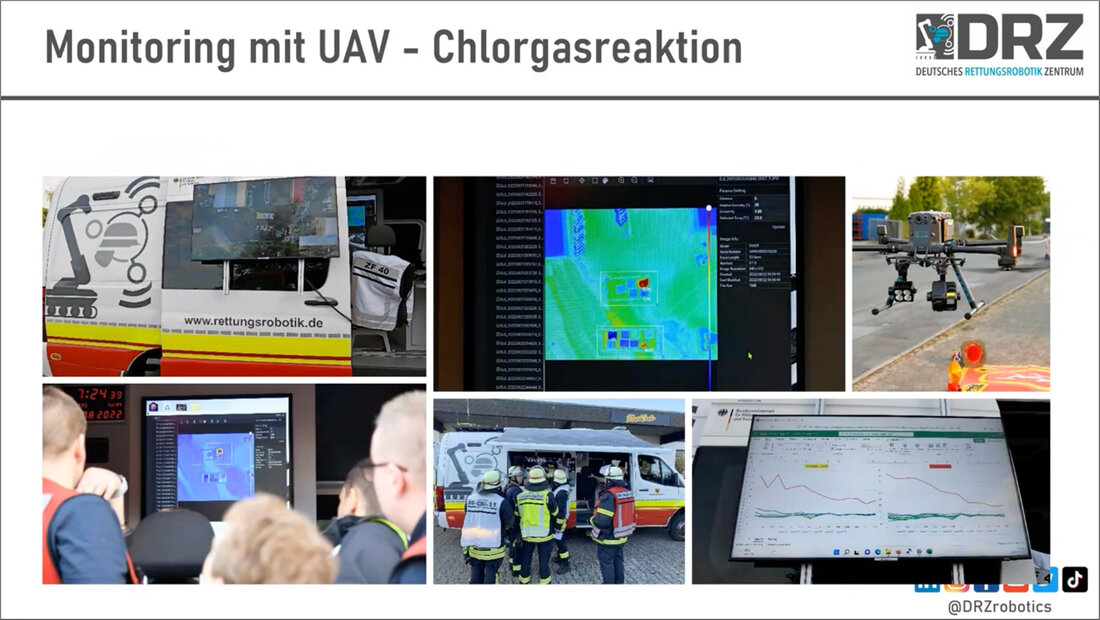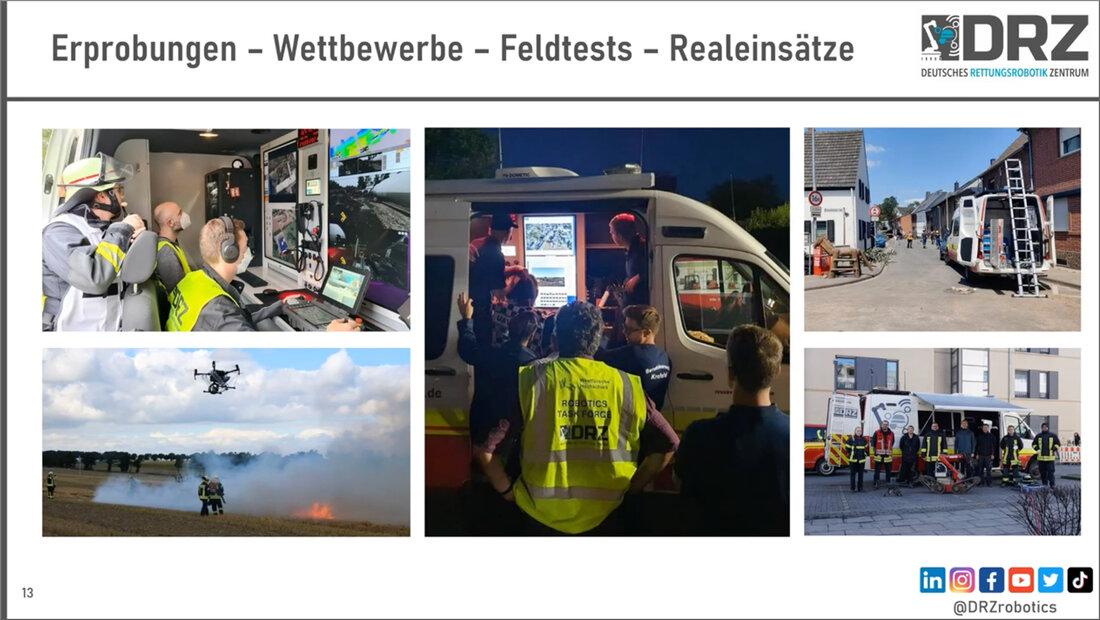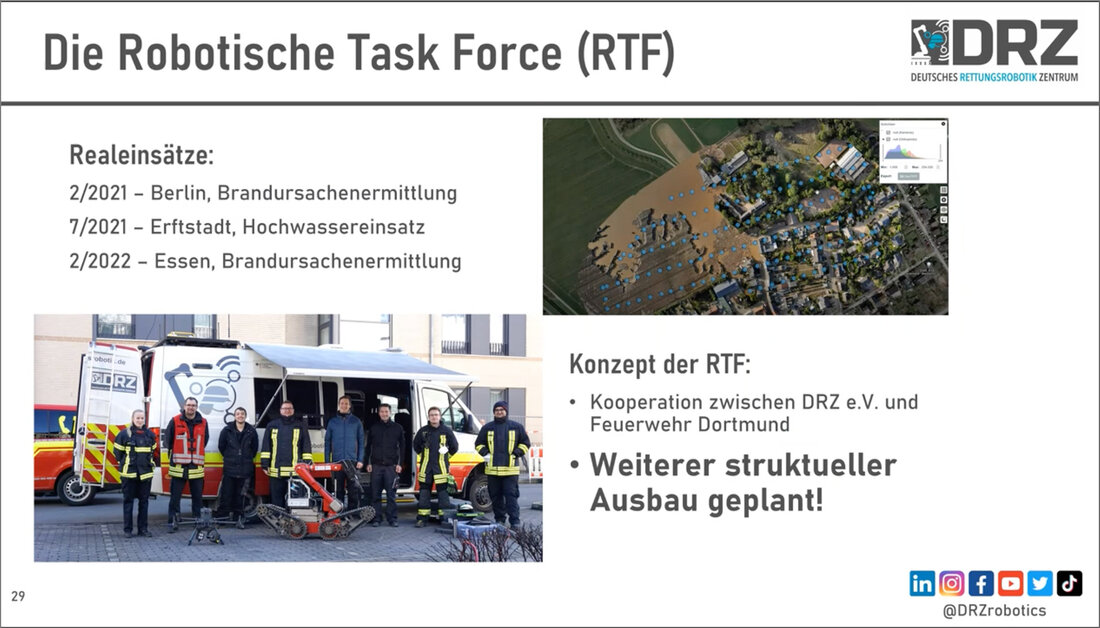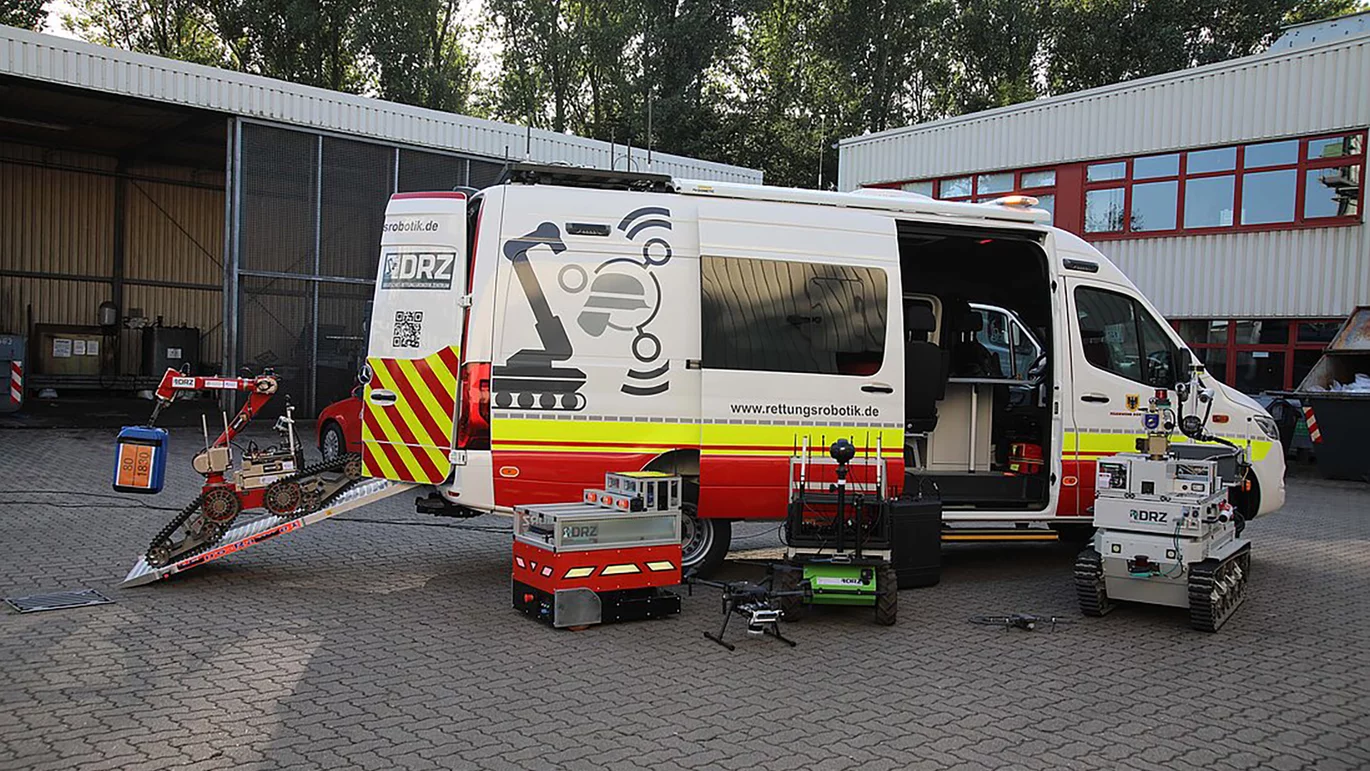Before fire services can use the potential of robots on a larger scale, Robert Grafe, Managing Director of the German Rescue Robotics Centre (Deutschen Rettungsrobotik-Zentrums; DRZ) in Dortmund, sees a considerable need for research and development. It does not primarily refer to the utilised technologies. Rather, it is about practical experience gained through field research and from incident operations.
Versatile application options for robots
Robots can support fire services in four areas, says Robert Grafe, and he explains these with examples:
- Robots could increase safety in operations by, for example, searching areas at risk of collapse.
- They could bring in new capabilities, such as aerial reconnaissance.
- They could relieve fire service personnel resources by taking over tasks such as transporting people.
- They could save costs, for example, if a situation can be reconnoitred more quickly and assessed better through the use of robots.
In order to get there, there are still several tasks to be solved, to which the fire services can contribute significantly.

The deployment of robots influences tactics
When fire services deploy robots, it can change their situation overview, options for action, and command paths. As a simple example, Robert Grafe mentions using a drone for reconnaissance. If the drone is flying ahead, it may arrive at the scene before the first officer or incident commander arrives. How and by whom should the drone's images then be used? Should the person controlling the drone determine the positioning of the emergency vehicles based on their situation overview? Or does he forward the data to the incident commander? How do the two communicate with each other? Neither the technology nor its manufacturers can answer these questions. This is where fire services are being challenged.

Robotic Task Force at the Dortmund Fire Service
The (further) development of tactics in cooperation with fire services is one of the DRZ's most important research tasks, according to Robert Grafe, and he emphasises the necessity to intensify field tests instead of trials under «laboratory conditions» and to use robots in operations. In this context, Grafe favours the concept of a robotic task force, as it has been set up on a test basis in cooperation with the Dortmund fire service. In concrete terms, this means that a special vehicle has been developed for operations with robotics. It currently serves as a drone carrier vehicle, but according to Grafe it can «do much more». In case of major incidents, other fire services could also contact this task force for support. However, there is no 24/7 on-call service.

Bottom-up approach for firefighting operations with robots
Robert Grafe takes a bottom-up approach when it comes to research and the integration of robotics into firefighting operations. It means not only asking whether and how the fire services could use existing robotic systems. But the other way around: What do the fire services need robotics for, and what technology must then be developed for the respective purpose? Therefore, he invites fire services to collaborate. Operations in underground car parks are already on the DRZ's list of topics. Robert Grafe was also asked about operations in underground transport systems: Could robots be used for the long reconnaissance routes in case of an incident in a railway tunnel? Grafe sees the option of joining forces with infrastructure managers on this issue. He recommends that fire services that work with the DRZ and want to get more intensively involved with the use of robotics become members of the non-profit associatio «Deutsches Rettungsrobotik-Zentrum e.V.».



![[Translate to English:] Robert Grafe [Translate to English:] Robert Grafe](/fileadmin/_processed_/0/1/csm_ifa_MAG_595_RobertGrafe_51501df2e6.webp)